Investigation of the Effect of Hydrothermal Waters on Radionuclide Activity Concentrations in Natural Marble with Multivariate Statistical Analysis
Abstract
:1. Introduction
2. Materials and Methods
2.1. Sampling and Preparation
2.2. Gamma Spectrometric Analyses of the Samples and Dose Calculations
2.3. Measurements of the Radiological Parameters
2.3.1. Radium Equivalent Activity Index (Raeq)
2.3.2. Absorbed Gamma Dose Rate (D)
2.3.3. Hazard Indices
Alpha Index (Iα)
Gamma Index (Iγ)
External Gamma Radiation (Hex)
Internal Alpha Radiation (Hin)
The Annual Effective Dose Equivalent (AEDE)
The Annual Gonadal Dose Equivalent (AGDE)
Excess Lifetime Cancer Risk (ELCRoutdoor)
Activity Utilization Index (AUI)
2.4. Physical Properties and Chemical Analysis
2.5. Multivariate Statistics
3. Results and Discussion
3.1. The Concentration of Natural Radionuclides
3.2. Radium Equivalent Activity (Raeq)
3.3. Absorbed Gamma dose Rate (D)
3.4. Alpha Index (Iα)
3.5. Gamma Index (Iγ)
3.6. External Gamma Radiation (Hex)
3.7. Internal Alpha Radiation (Hin)
3.8. The Annual Effective Dose Equivalent (AEDE)
3.9. The Annual Gonadal Dose Equivalent (AGDE)
3.10. Excess Lifetime Cancer Risk (ELCRoutdoor)
3.11. Activity Utilization Index (AUI)
4. Physical Properties and Chemical Analysis
5. Multivariate Statistical Analysis
5.1. Descriptive Statistics
5.2. Correlation Analysis
5.3. Factor Analysis
5.4. Cluster Analysis (CA)
5.5. Regression Analysis
6. Comparison with Other Countries
7. Conclusions
Supplementary Materials
Author Contributions
Funding
Conflicts of Interest
References
- United Natıons Sources Effects and Risks of Ionizing Radiation (UNSCEAR). Report to the General Assembly, with Annexes; United Nations Sources Effects and Risks of Ionizing Radiation: New York, NY, USA, 1988. [Google Scholar]
- Mamont-Ciesla, K.; Gwiazdowski, B.; Biernacka, M.; Zak, A. Radioactivity of building materials in Poland. In Natural Radiation Environment; Halsted Press: New York, NY, USA, 1982; p. 551. [Google Scholar]
- Beretka, J.; Mathew, P.J. Natural radioactivity of Australian building materials, industrial wastes and by-products. Health Phys. 1985, 48, 87–95. [Google Scholar] [CrossRef] [PubMed]
- Ramassay, V.; Dheenathayalu, M.; Ravisankar, R.; Ponnusamy, V. Natural radioactivity measurements in Beach-rock samples of South-East Coast of Tamilnadu, India. Radiat. Prot. Dosim. 2004, 111, 229–235. [Google Scholar] [CrossRef] [PubMed]
- Rati, V.; Mahur, A.; Sonkawade, R.; Suhail, M.; Azam, A.; Prasad, R. Evaluation and analysis of 226Ra, 232Th, 40K and radon exhalation rate in various grey cements. Indian J. Pure Appl. Phys. 2010, 48, 473–482. [Google Scholar]
- Mohamed, R.I.; Algamdi, S.K.; Al-Shamani, N.S. Evaluation of radionuclide concentrations and associated radiological hazard in marble indices and granite used as building materials in Al-Madinah Al-Munawarah. J. Taibah Univ. Sci. 2016, 10, 369–374. [Google Scholar] [CrossRef] [Green Version]
- Elnobi, S.; Harb, S.; Ahmed, N.K. Influence of grain size on radionuclide activity concentrations and radiological hazard of building material samples. Appl. Radiat. Isot. 2017, 130, 43–48. [Google Scholar] [CrossRef] [PubMed]
- Abdellah, W.M.; Mansour, N.A.; Diab, H.M.; Hassan, N.M.; Kasem, A.; Ibrahim, M.H. Evaluation of Natural Radioactivity and its Radiation Hazards in Some Building and Decorative Materials in Iraq. Arab J. Nucl. Sci. Appl. 2018, 51, 39–45. [Google Scholar]
- Borsellino, C.; Calabrese, L.; Di Bella, G. Effects of powder concentration and type of resin on the performance of marble composite structures. Const. Build. Mater. 2009, 23, 1915–1921. [Google Scholar] [CrossRef]
- Yalcin, F.; Ilbeyli, N.; Demirbilek, M.; Yalcin, M.G.; Gunes, A.; Kaygusuz, A.; Ozmen, S.F. Estimation of Natural Radionuclides’ Concentration of the Plutonic Rocks in the Sakarya Zone, Turkey Using Multivariate Statistical Methods. Symmetry 2020, 12, 1048. [Google Scholar] [CrossRef]
- El-Gamal, H.; El-Haddad, M. Estimation of Natural Radionuclides and Rare Earth Elements Concentration of the Rocks of Abu Khuruq Ring Complex, Egypt. Symmetry 2019, 11, 1041. [Google Scholar] [CrossRef] [Green Version]
- Kalkwarf, D.R.; Jackson, P.O.; Kutt, J.C. Emanation coefficients for Rn in sized coal fly ash. Health Phys. 1985, 48, 429–436. [Google Scholar] [CrossRef]
- Kumari, R.; Kant, K.; Garg, M. The effect of grain size on radon exhalation rate in natural-dust and stone-dust samples. Phys. Procedia 2015, 80, 128–130. [Google Scholar] [CrossRef] [Green Version]
- Unal, S.; Yalcin, M.G.; Ocak, S.; Yalcin, R.; Ozmen, S.F. Computation of gamma radioactivity of natural rocks in the vicinity of Antalya province and its effect on health. Kerntechnik 2018, 83, 112–120. [Google Scholar] [CrossRef]
- Yalcin, M.G.; Unal, S. Natural radioactivity levels and associated radiation hazards in ophiolites around Tekirova, Kemer, and Kumluca Touristic Regions in Antalya, Turkey. J. Radioanal. Nucl. Chem. 2018, 316, 321–330. [Google Scholar] [CrossRef]
- Nyamsari, D.G.; Yalcin, F.; Mboh, M.T.; Alfred, F.G.; Yalcin, M.G. Natural radioactive risk assessment in top soil and possible health effect in Minim and Martap villages, Cameroon: Using radioactive risk index and statistical analysis. Kerntechnik 2019, 84, 115–122. [Google Scholar] [CrossRef]
- Nyamsaria, D.G.; Yalcin, M.G.; Wolfson, I. Alteration, Chemical Process and Parent Rock of Haléo-Danielle Plateau Bauxite, Adamawa–Cameroon. Lithol. Miner. Resour. 2020, 55, 231–243. [Google Scholar] [CrossRef]
- Al-Jarallah, M.I.; Musazay, M.S.; Abu-Jarad, F. Application of the can technique and radon gas analyzer for radon exhalation measurements. Appl. Radiat. Isot. 2003, 59, 353–358. [Google Scholar]
- Ergul, H.A.; Belivermis, M.; Kilic, O.; Topcuoglu, S.; Cotuk, Y. Natural and artificial radionuclide activity concentrations in surface sediments of Izmit Bay, Turkey. J. Environ. Radioact. 2013, 126, 125–132. [Google Scholar] [CrossRef]
- Papaefthymiou, H.; Gkaragkouni, A.; Papatheodorou, G.; Geraga, M. Radionuclide activities and elemental concentrations in sediments from a polluted marine environment (Saronikos Gulf-Greece). J. Radioanal. Nucl. Chem. 2017, 314, 1841–1852. [Google Scholar] [CrossRef]
- Saenboonruang, K.; Phonchanthuek, E.; Prasandee, K. Determination Using Gamma Spectroscopy of Natural Radionuclide Activity Concentrations and Annual Committed Effective Doses in Selected Thai Medicinal Plants. Chiang Mai J. Sci. 2018, 45, 821–831. [Google Scholar]
- Rosli, M.N.R.; Samat, S.B.; Yasir, M.S.; Yusof, M.F. Determination of Concentration Activity Natural Radionuclide (232) th, (238) u and (40) k in Fish at the Coastal Arca of Terengganu, Malaysia. Sains Malays. 2018, 47, 2151–2156. [Google Scholar] [CrossRef]
- Chandrasekaran, A.; Ravisankar, R.; Rajalakshmi, A.; Eswaran, P.; Vijayagopal, P.; Venkatraman, B. Assessment of natural radioactivity and function of minerals in soils of Yelagiri hills, Tamilnadu, India by Gamma Ray spectroscopic and Fourier Transform Infrared (FTIR) techniques with statistical approach. Spectrochim. Acta Part A Mol. Biomol. Spectrosc. 2015, 136, 1734–1744. [Google Scholar] [CrossRef]
- He, L.C.; Diao, L.J.; Sun, B.H.; Zhu, L.H.; Zhao, J.W.; Wang, M.; Wang, K. Summing coincidence correction for γ-ray measurements using the HPGe detector with a low background shielding system. Nucl. Instrum. Methods Phys. Res. Sect. A Accel. Spectrometers Detect. Assoc. Equip. 2018, 880, 22–27. [Google Scholar] [CrossRef]
- Guerra, J.G.; Rubiano, J.G.; Winter, G.; Guerra, A.G.; Alonso, H.; Arnedo, M.A.; Bolivar, J. Automatic modeling using PENELOPE of two HPGe detectors used for measurement of environmental samples by γ-spectrometry from a few sets of experimental efficiencies. Nucl. Instrum. Methods Phys. Res. Sect. A Accel. Spectrometers Detect. Assoc. Equip. 2018, 880, 67–74. [Google Scholar] [CrossRef] [Green Version]
- UNSCEAR. Sources and Effects of Ionizing Radiation: Report to the General Assembly, Scientific Annexes; United Nations: New York, NY, USA, 2010; Volume 1, pp. 1–219. [Google Scholar]
- Veiga, R.; Sanches, N.; Anjos, R.M.; Macario, K.; Bastos, J.; Iguatemy, M.; Baptista Filho, M. Measurement of natural radioactivity in Brazilian beach sands. Radiat. Meas. 2006, 41, 189–196. [Google Scholar] [CrossRef]
- Sharaf, J.M.; Hamideen, M.S. Measurement of natural radioactivity in Jordanian building materials and their contribution to the public indoor gamma dose rate. Appl. Radiat. Isot. 2013, 80, 61–66. [Google Scholar] [CrossRef] [PubMed]
- United Nations Scientific Committee on the Effects of Atomic Radiation (UNSCEAR). Report to the General Assembly, with Annexes; United Nations Scientific Committee on the Effects of Atomic Radiation: New York, NY, USA, 1982; pp. 84–89. [Google Scholar]
- Gbenu, S.T.; Oladejo, O.F.; Alayande, O.; Olukotun, S.F.; Fasasi, M.K. Assessment of radiological hazards of quarry products from southwest Nigeria. J. Radiat. Res. Appl. Sci. 2016, 9, 20–25. [Google Scholar] [CrossRef] [Green Version]
- Kaliprasad, C.S.; Vinutha, P.R.; Narayana, Y. Natural radionuclides and radon exhalation rate in the soils of cauvery river basin. Air Soil Water Res. 2017, 10, 1–7. [Google Scholar] [CrossRef] [Green Version]
- Krieger, R. Radioactivity of construction materials. Betonw. Fert. Tech. 1981, 47, 468–473. [Google Scholar]
- United Nations Scientific Committee on the Effects of Atomic Radiation (UNSCEAR). Sources, effects and risks of ionizing radiation. In Report to the General Assembly with Annex B: Exposures from Natural Sources of Radiation; United Nations: New York, NY, USA, 2000. [Google Scholar]
- Tsai, T.L.; Liu, C.C.; Chuang, C.Y.; Wei, H.J.; Men, L.C. The effects of physico-chemical properties on natural radioactivity levels, associated dose rate and evaluation of radiation hazard in the soil of Taiwan using statistical analysis. J. Radioanal. Nucl. Chem. 2011, 288, 927–936. [Google Scholar] [CrossRef]
- Ravisankar, R.; Sivakumar, S.; Chandrasekaran, A.; Jebakumar, J.P.P.; Vijayalakshmi, I.; Vijayagopal, P.; Venkatraman, B. Spatial distribution of gamma radioactivity levels and radiological hazard indices in the East Coastal sediments of Tamilnadu, India with statistical approach. Radiat. Phys. Chem. 2014, 103, 89–98. [Google Scholar] [CrossRef]
- Ravisankar, R.; Raghu, Y.; Chandrasekaran, A.; Gandhi, M.S.; Vijayagopal, P.; Venkatraman, B. Determination of natural radioactivity and the associated radiation hazards in building materials used in Polur, Tiruvannamalai District, Tamilnadu, India using gamma ray spectrometry with statistical approach. J. Geochem. Explor. 2016, 163, 41–52. [Google Scholar] [CrossRef]
- Raghu, Y.; Ravisankar, R.; Chandrasekaran, A.; Vijayagopal, P.; Venkatraman, B. Assessment of natural radioactivity and radiological hazards in building materials used in the Tiruvannamalai District, Tamilnadu, India, using a statistical approach. J. Taibah Univ. Sci. 2017, 11, 523–533. [Google Scholar] [CrossRef] [Green Version]
- Nguelem, E.J.M.; Ndontchueng, M.M.; Motapon, O.; Guembou, C.J.S.; Darko, E.O. Radiological monitoring and statistical approach of primordial and anthropogenic radionuclides in surface soil of Mami-water site in the Western Cameroon. Environ. Earth Sci. 2017, 76, 612. [Google Scholar] [CrossRef]
- Akozcan, S.; Kulahci, F.; Mercan, Y. A suggestion to radiological hazards characterization of 226Ra, 232Th, 40K and 137Cs: Spatial distribution modelling. J. Hazard. Mater. 2018, 353, 476–489. [Google Scholar] [CrossRef] [PubMed]
- Gbadamosi, M.R.; Afolabi, T.A.; Banjoko, O.O.; Ogunneye, A.L.; Abudu, K.A.; Ogunbanjo, O.O.; Jegede, D.O. Spatial distribution and lifetime cancer risk due to naturally occurring radionuclides in soils around tar-sand deposit area of Ogun State, southwest Nigeria. Chemosphere 2018, 193, 1036–1048. [Google Scholar] [CrossRef] [PubMed]
- Gunoglu, K.; Seckiner, S. Evaluation of dose parameters and radiological hazards in gravel samples of Konyaaltı Beach, Antalya. Arab. J. Geosci. 2018, 11, 457. [Google Scholar] [CrossRef]
- Shohda, A.M.; Draz, W.M.; Ali, F.A.; Yassien, M.A. Natural radioactivity levels and evaluation of radiological hazards in some Egyptian ornamental stones. J. Radiat. Res. Appl. Sci. 2018, 11, 323–327. [Google Scholar] [CrossRef] [Green Version]
- Aladeniyi, K.; Olowookere, C.; Oladele, B.B. Measurement of natural radioactivity and radiological hazard evaluation in the soil samples collected from Owo, Ondo State, Nigeria. J. Radiat. Res. Appl. Sci. 2019, 12, 200–209. [Google Scholar] [CrossRef] [Green Version]
- Hamideen, M.S.; Bdair, O.M.; Chandrasekaran, A.; Saleh, H.; Elimat, Z.M. Multivariate statistical investigations of natural radioactivity and radiological hazards in building materials mainly used in Amman Province, Jordan. Int. J. Environ. Anal. Chem. 2020, 100, 189–203. [Google Scholar] [CrossRef]
- Hamideen, M.S.; Chandrasekaran, A.; Elimat, Z.M. Statistical assessment of radiological data of tiles collected from Jordan. Int. J. Environ. Anal. Chem. 2019, 99, 1325–1339. [Google Scholar] [CrossRef]
- Ogundele, L.T.; Ayeku, P.O.; Inuyomi, S.O.; Ogunsakin, O.M.; Oladejo, O.F.; Adejoro, I.A. Assessment of naturally occurring 40K, 232Th and 238U and their associated radiological hazard indices in soils used for building in Ondo West Local Government Area, Southwestern, Nigeria. EQA Int. J. Environ. Qual. 2019, 37, 11–21. [Google Scholar]
- Liu, Q.; Feng, G.; Lu, Z.; Tang, C.; Wu, B.; Mao, P.; Cai, C. Assessment of Tenorm and potential radiological hazards from the main brand glazed tiles produced in China with statistical analysis. Int. J. Environ. Anal. Chem. 2020, 1–12. [Google Scholar] [CrossRef]
- ICRP. ICRP Publication 70: Basic Anatomical & Physiological Data for Use in Radiological Protection: The Skeleton; Elsevier Health Sciences: Amsterdam, The Netherlands, 1996; Volume 70. [Google Scholar]
- Ozer, O.; Yalcin, F.; Tarinc, O.K.; Yalcin, M.G. Investigation of suitability of marbles to standards with inequality expressions and statistical approach using some physical and mechanical properties. J. Inequal. Appl. 2020, 97. [Google Scholar] [CrossRef]
- Amrani, D.; Tahtat, M. Natural radioactivity in Algerian building materials. Appl. Radiat. Isot. 2001, 54, 687–689. [Google Scholar] [CrossRef]
- Bachama, Y.D.; Ahmed, A.L.; Lawal, K.M.; Arabi, A.S. Natural Gamma Radiation in Rocks from Kerri-Kerri Formation, Northeastern Nigeria. J. Afr. Earth Sci. 2017, 130, 269–273. [Google Scholar] [CrossRef]
- Akkurt, I.; Oruncak, B.; Gunoglu, K. Natural Radioactivity and dose rates in commercially used marble from Afyonkarahisar-Turkey. Int. J. Phys. Sci. 2010, 5, 170–173. [Google Scholar]
- Ngachin, M.; Garavaglia, M.; Giovani, C.; Kwato Njock, M.G.; Nourreddine, A. Assessment of natural radioactivity and associated radiation hazards in some Cameroonian building materials. Radiat. Meas. 2007, 42, 61–67. [Google Scholar] [CrossRef]
- Manai, K.; Ferchichi, C.; Oueslati, M.; Trabelsi, A. Gamma radiation measurements in Tunisian marbles. World J. Nucl. Sci. Technol. 2012, 2, 5. [Google Scholar] [CrossRef] [Green Version]
- Fares, S.; Yassene, A.A.; Ashour, A.; Abu-Assy, M.K.; El-Rahman, M.A. Natural radioactivity and the resulting radiation doses in some kinds of commercially marble collected from different quarries and factories in Egypt. Nat. Sci. 2011, 3, 895–905. [Google Scholar] [CrossRef] [Green Version]
- Huang, Y.; Lu, X.; Ding, X.; Feng, T. Natural radioactivity level in beach sand along the coast of Xiamen Island, China. Mar. Pollut. Bull. 2015, 91, 357–361. [Google Scholar] [CrossRef]
- Tufail, M.; Hamid, T. Natural radioactivity hazards of building bricks fabricated from saline soil of two districts of Pakistan. J. Radiol. Prot. 2007, 27, 481. [Google Scholar] [CrossRef] [PubMed]
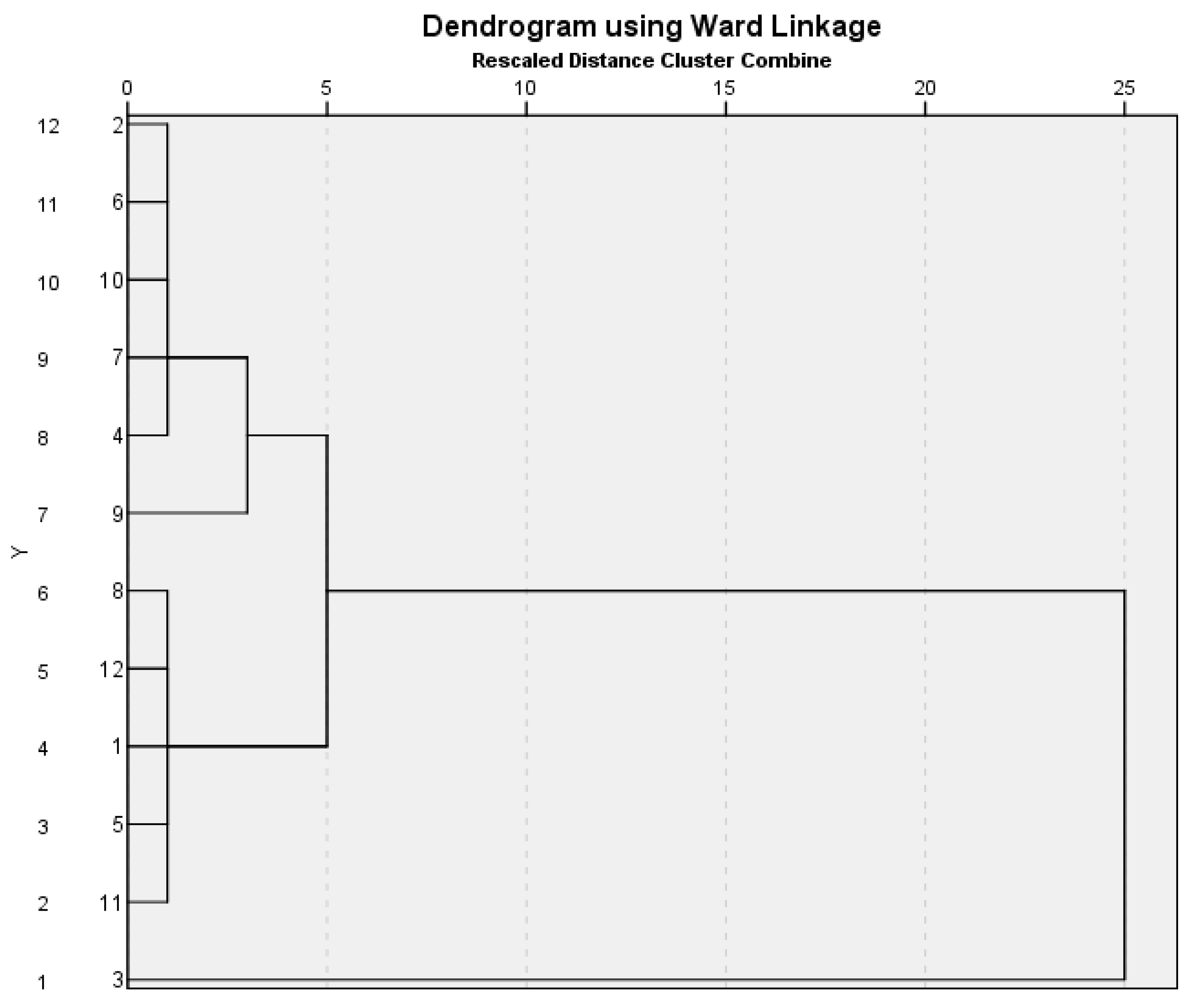
| Radionuclides | Energy (keV) | MDA (Bq/kq) | Background (Bq/kq) |
|---|---|---|---|
| 214Pb | 352 | 0.32 | 85.6 |
| 214Bi | 609-1120-1749 | 0.41 | 30 |
| 228Ac | 338-911 | 0.60 | 33 |
| 40K | 1460 | 4.51 | 141 |
| Sample | Sample | Properties | 226Ra (Bq kg−1) | 232Th (Bq kg−1) | 40K (Bq kg−1) | Raeq Bq kg−1 | D nGy | Iα µRhr−1 | Iγ | Hex | Hin | AEDE µSv yr−1 | AGDE µSv yr−1 | ELCR µSv yr−1 | AUI | Ca ppm | Al ppm | Na ppm | K ppm | P ppm | Mg ppm | La ppm | Cr ppm | Ba ppm | Zr ppm | Y ppm | Nb ppm | Cu ppm | Pb ppm | Zn ppm | Ni ppm | Co ppm | Mn ppm | Fe ppm | Sr ppm | Cd ppm | Bi ppm | V ppm |
|---|---|---|---|---|---|---|---|---|---|---|---|---|---|---|---|---|---|---|---|---|---|---|---|---|---|---|---|---|---|---|---|---|---|---|---|---|---|---|
| M1, Korkuteli Toros Beji |  | thin, medium, layered, beige, cream, reddish colored, micritic limestone, sandy limestone | 6.85 | 4.62 | 80.90 | 19.69 | 9.39 | 0.03 | 0.32 | 0.07 | 0.05 | 11.51 | 65.88 | 0.04 | 0.39 | 390,600 | 180 | 200 | 600 | 430 | 3800 | 3 | 5 | 7 | 3 | 7 | 3 | 2 | 5 | 23 | 4 | 2 | 110 | 0.15 | 252 | 0.9 | 5 | 4 |
| M2, Denizli Traverten |  | Banded and intraclasted, pisolitic, hollow and partially massive, white and whitish yellow marble | 3.74 | 4.88 | 53.30 | 14.82 | 6.97 | 0.02 | 0.21 | 0.05 | 0.04 | 8.55 | 48.69 | 0.03 | 0.28 | 383,100 | 800 | 100 | 100 | 40 | 2200 | 2 | 2 | 26 | 2 | 2 | 3 | 2 | 6 | 28 | 2 | 2 | 12 | 0.06 | 686 | 0.4 | 5 | 2 |
| M3, Isparta Emperador Gri |  | massive, thick and medium bedded, gray recrystallized limestone | 6.60 | 3.17 | 69.00 | 16.45 | 7.88 | 0.03 | 0.27 | 0.06 | 0.04 | 9.66 | 55.31 | 0.03 | 0.33 | 351,100 | 400 | 100 | 100 | 30 | 34800 | 2 | 3 | 4 | 2 | 2 | 2 | 2 | 5 | 22 | 2 | 2 | 15 | 0.04 | 108 | 0.7 | 5 | 2 |
| M4, Burdur Bej Karamanlı |  | yellowish, beige, light brown, massive structure, thick layered carbonate rocks, micro-mesocrystalline calcite minerals | 5.58 | 3.65 | 65.80 | 15.87 | 7.57 | 0.03 | 0.26 | 0.06 | 0.04 | 9.29 | 53.16 | 0.03 | 0.32 | 384,900 | 500 | 100 | 100 | 150 | 10800 | 2 | 5 | 4 | 2 | 2 | 2 | 2 | 5 | 48 | 2 | 2 | 25 | 0.03 | 181 | 0.7 | 5 | 2 |
| M5, Burdur Kahve | 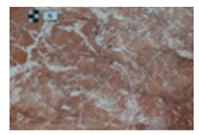 | beige, light brown, massive, thick bedded carbonate rocks, micro-mesocrystalline, calcite minerals. | 2.85 | 4.05 | 71.10 | 14.12 | 6.78 | 0.01 | 0.27 | 0.05 | 0.04 | 8.32 | 48.06 | 0.03 | 0.28 | 387,900 | 150 | 100 | 500 | 110 | 2700 | 6 | 5 | 12 | 3 | 14 | 2 | 4 | 5 | 26 | 7 | 5 | 285 | 0.09 | 207 | 1.2 | 5 | 3 |
| M6 Emperador Gri | 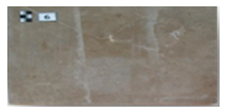 | Gray tones, massive, thick and medium bedded, recrystallizedlimestone | 22.90 | 2.13 | 52.90 | 29.99 | 14.06 | 0.11 | 0.26 | 0.14 | 0.08 | 17.24 | 96.28 | 0.06 | 0.61 | 383,400 | 300 | 100 | 100 | 30 | 3100 | 2 | 4 | 4 | 2 | 2 | 2 | 2 | 5 | 11 | 2 | 2 | 5 | 0.02 | 225 | 0.4 | 5 | 4 |
| M7, Isparta Davraz Bej | 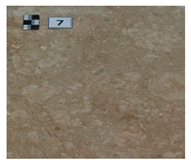 | yellowish, beige and gray color tones, massive, thick, medium bedded, contains fossils | 64.70 | 2.55 | 57.70 | 72.82 | 33.82 | 0.32 | 0.42 | 0.37 | 0.20 | 41.48 | 228.70 | 0.15 | 1.46 | 383,000 | 300 | 200 | 100 | 410 | 4700 | 2 | 5 | 21 | 2 | 2 | 2 | 2 | 5 | 15 | 2 | 2 | 24 | 0.04 | 519 | 0.6 | 7 | 11 |
| M8, Burdur Bej |  | yellowish, beige, light brown, massive structure, thick layered carbonate rocks, micro-mesocrystalline | 7.84 | 2.16 | 67.30 | 16.10 | 7.74 | 0.04 | 0.26 | 0.06 | 0.04 | 9.49 | 54.39 | 0.03 | 0.33 | 393,600 | 500 | 100 | 100 | 120 | 2200 | 3 | 2 | 4 | 2 | 8 | 3 | 2 | 5 | 23 | 2 | 2 | 45 | 0.04 | 212 | 1.2 | 5 | 2 |
| M9, Korkuteli Toros Beji(E) | 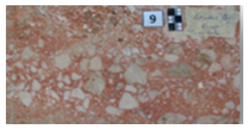 | thin, medium, layered, beige, cream, reddish colored, micritic limestone, sandy limestone, thin microconglomera | 10.70 | 2.95 | 95.90 | 22.34 | 10.76 | 0.05 | 0.37 | 0.09 | 0.06 | 13.20 | 75.51 | 0.05 | 0.46 | 378,600 | 600 | 300 | 200 | 3550 | 19000 | 9 | 4 | 5 | 2 | 18 | 2 | 2 | 5 | 19 | 4 | 2 | 93 | 0.02 | 238 | 0.6 | 5 | 2 |
| M10, Bursa Bej |  | Fine grained, crystalline, calcite, opaque in gray, brown, beige dolomitic color | 15.50 | 3.46 | 68.20 | 25.71 | 12.13 | 0.08 | 0.30 | 0.11 | 0.07 | 14.88 | 83.77 | 0.05 | 0.52 | 381,900 | 600 | 100 | 200 | 30 | 2500 | 2 | 3 | 3 | 2 | 2 | 3 | 2 | 5 | 9 | 2 | 2 | 11 | 0.03 | 154 | 0.4 | 5 | 9 |
| M11, Korkuteli Krem Beji | 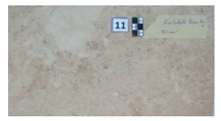 | fine, medium, layered, beige, cream colored, micritic limestone, sandy limestone, fine microconglomera | 10.70 | 2.58 | 53.40 | 18.55 | 8.77 | 0.05 | 0.23 | 0.08 | 0.05 | 10.76 | 60.62 | 0.04 | 0.37 | 400,000 | 400 | 200 | 100 | 1480 | 6200 | 4 | 2 | 2 | 2 | 8 | 3 | 2 | 5 | 27 | 2 | 2 | 59 | 0.03 | 347 | 0.4 | 5 | 2 |
| M12, Muğla Beyazı | 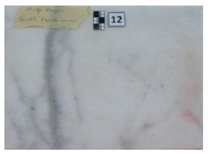 | white color tones, low porosity, calcite, opaque | 12.30 | 3.50 | 58.00 | 21.72 | 10.23 | 0.06 | 0.25 | 0.09 | 0.06 | 12.54 | 70.85 | 0.04 | 0.43 | 395,300 | 200 | 100 | 100 | 20 | 1200 | 2 | 3 | 2 | 2 | 2 | 2 | 2 | 5 | 9 | 2 | 2 | 5 | 0.01 | 96 | 0.4 | 5 | 2 |
| 226Ra | 232Th | 40K | Raeq | D | AGDE | Iα | Iγ | Hex | Hin | AEDE | ELCR | AUI | Ca | Al | Na | K | P | Mg | La | Cr | Ba | Zr | Y | Nb | Cu | Pb | Zn | Ni | Co | Mn | Fe | Sr | Cd | Bi | V | |
|---|---|---|---|---|---|---|---|---|---|---|---|---|---|---|---|---|---|---|---|---|---|---|---|---|---|---|---|---|---|---|---|---|---|---|---|---|
| Ra226 | 1.000 | |||||||||||||||||||||||||||||||||||
| Th232 | −0.690 * | 1.000 | ||||||||||||||||||||||||||||||||||
| K40 | −0.319 | 0.287 | 1.000 | |||||||||||||||||||||||||||||||||
| Raeq | 0.949 ** | −0.566 | −0.140 | 1.000 | ||||||||||||||||||||||||||||||||
| D | 0.949 ** | −0.566 | −0.140 | 1.000 ** | 1.000 | |||||||||||||||||||||||||||||||
| AGDE | 0.949 ** | −0.566 | −0.140 | 1.000 ** | 1.000 ** | 1.000 | ||||||||||||||||||||||||||||||
| Iα | 0.993 ** | −0.709 ** | −0.356 | 0.928 ** | 0.928 ** | 0.928 ** | 1.000 | |||||||||||||||||||||||||||||
| Iγ | 0.290 | −0.134 | 0.638* | 0.487 | 0.487 | 0.487 | 0.256 | 1.000 | ||||||||||||||||||||||||||||
| Hex | 0.972 ** | −0.597 * | −0.216 | 0.982 ** | 0.982 ** | 0.982 ** | 0.964 ** | 0.412 | 1.000 | |||||||||||||||||||||||||||
| Hin | 0.930 ** | −0.473 | −0.222 | 0.961 ** | 0.961 ** | 0.961 ** | 0.911 ** | 0.419 | 0.971 ** | 1.000 | ||||||||||||||||||||||||||
| AEDE | 0.949 ** | −0.566 | −0.140 | 1.000 ** | 1.000 ** | 1.000 ** | 0.0928 ** | 0.487 | 0.982 ** | 0.961 ** | 1.000 | |||||||||||||||||||||||||
| ELCR | 0.900 ** | −0.498 | −0.168 | 0.955 ** | 0.955 ** | .955 ** | 0.877 ** | 0.480 | 0.956 ** | 0.985 ** | 0.955 ** | 1.000 | ||||||||||||||||||||||||
| AUI | 0.956 ** | −0.589 * | −0.119 | 0.996 ** | 0.996 ** | 0.996 ** | 0.935 ** | 0.503 | 0.986 ** | 0.964 ** | 0.996 ** | 0.959 ** | 1.000 | |||||||||||||||||||||||
| Ca | −0.077 | 0.042 | −0.252 | −0.266 | −0.266 | −0.266 | −0.092 | −0.533 | −0.163 | −0.167 | −0.266 | −0.209 | −0.225 | 1.000 | ||||||||||||||||||||||
| Al | −0.046 | −0.032 | −0.106 | −0.070 | −0.070 | −0.070 | 0.000 | −0.179 | −0.091 | −0.139 | −0.070 | −0.103 | −0.102 | −0.433 | 1.000 | |||||||||||||||||||||
| Na | 0.295 | −0.164 | 0.277 | 0.412 | 0.412 | 0.412 | 0.250 | 0.496 | 0.384 | 0.396 | 0.412 | 0.512 | 0.413 | −0.029 | −0.049 | 1.000 | ||||||||||||||||||||
| K | −0.205 | 0.430 | 0.763 ** | −0.017 | −0.017 | −0.017 | −0.269 | 0.570 | −0.074 | 0.041 | −0.017 | 0.096 | 0.010 | −0.096 | −0.248 | 0.308 | 1.000 | |||||||||||||||||||
| P | −0.074 | −0.070 | 0.296 | −0.007 | −0.007 | −0.007 | −0.089 | 0.337 | 0.000 | −0.015 | −0.007 | 0.129 | 0.011 | 0.106 | 0.085 | 0.838 ** | 0.277 | 1.000 | ||||||||||||||||||
| Mg | −0.056 | −0.182 | 0.312 | 0.105 | 0.105 | 0.105 | −0.035 | 0.421 | 0.080 | −0.022 | 0.105 | 0.092 | 0.081 | −0.445 | 0.058 | 0.493 | 0.033 | 0.515 | 1.000 | |||||||||||||||||
| La | −0.262 | −0.020 | 0.547 | −0.238 | −0.238 | −0.238 | −0.300 | 0.197 | −0.233 | −0.197 | −0.238 | −0.090 | −0.194 | 0.270 | −0.140 | 0.542 | 0.552 | 0.673 * | 0.194 | 1.000 | ||||||||||||||||
| Cr | −0.013 | 0.185 | 0.362 | 0.170 | 0.170 | 0.170 | −0.013 | 0.648 * | 0.172 | 0.218 | 0.170 | 0.248 | 0.191 | −0.174 | −0.528 | 0.233 | 0.462 | 0.241 | 0.352 | 0.055 | 1.000 | |||||||||||||||
| Ba | −0.352 | 0.335 | 0.132 | −0.203 | −0.203 | −0.203 | −0.380 | 0.347 | −0.290 | −0.148 | −0.203 | −0.078 | −0.211 | −0.360 | −0.013 | 0.191 | 0.268 | 0.291 | 0.048 | 0.106 | 0.406 | 1.000 | ||||||||||||||
| Zr | −0.454 | 0.518 | 0.518 | −0.324 | −0.324 | −0.324 | −0.523 | 0.294 | −0.360 | −0.236 | −0.324 | −0.203 | −0.293 | 0.259 | −0.652 * | 0.117 | 0.773 ** | 0.196 | −0.065 | 0.471 | 0.536 | 0.396 | 1.000 | |||||||||||||
| Y | −0.264 | −0.063 | 0.547 | −0.258 | −0.258 | −0.258 | −0.298 | 0.189 | −0.253 | −0.226 | −0.258 | −0.123 | −0.210 | 0.266 | −0.106 | 0.491 | 0.517 | 0.645 * | 0.151 | 0.993 ** | 0.020 | 0.108 | 0.434 | 1.000 | ||||||||||||
| Nb | −0.098 | 0.171 | −0.073 | −0.171 | −0.171 | −0.171 | −0.148 | −0.272 | −0.198 | −0.178 | −0.171 | −0.154 | −0.172 | 0.318 | 0.345 | 0.059 | 0.146 | 0.173 | −0.368 | 0.137 | −0.557 | −0.075 | 0.076 | 0.137 | 1.000 | |||||||||||
| Cu | −0.481 | 0.306 | 0.306 | −0.480 | −0.480 | −0.480 | −0.485 | 0.088 | −0.441 | −0.318 | −0.480 | −0.320 | −0.438 | 0.131 | −0.484 | −0.210 | 0.469 | −0.044 | −0.131 | 0.439 | 0.362 | 0.312 | 0.674 * | 0.439 | −0.255 | 1.000 | ||||||||||
| Pb | −0.394 | 0.480 | −0.393 | −0.393 | −0.393 | −0.393 | −0.397 | −0.485 | −0.441 | −0.318 | −0.393 | −0.320 | −0.438 | −0.131 | 0.484 | −0.210 | −0.208 | −0.132 | −0.350 | −0.244 | −0.407 | 0.490 | −0.135 | −0.244 | 0.357 | −0.091 | 1.000 | |||||||||
| Zn | −0.784 ** | 0.414 | −0.039 | −0.804 ** | −0.804 ** | −0.804 ** | −0.758 ** | −0.389 | −0.771 ** | −0.771 ** | −0.804 ** | −0.696* | −0.808 ** | 0.263 | 0.163 | −0.002 | −0.073 | 0.456 | 0.220 | 0.278 | −0.027 | 0.322 | 0.228 | .269 | 0.246 | 0.219 | 0.394 | 1.000 | ||||||||
| Ni | −0.380 | 0.377 | 0.732 ** | −0.203 | −0.203 | −0.203 | −0.434 | 0.474 | −0.249 | −0.129 | −0.203 | −0.051 | −0.171 | −0.005 | −0.382 | 0.393 | 0.859 ** | 0.427 | 0.157 | 0.749 ** | 0.529 | 0.437 | 0.810 ** | 0.720 ** | −0.129 | 0.632 * | −0.172 | 0.136 | 1.000 | |||||||
| Co | −0.481 | 0.306 | 0.306 | −0.480 | −0.480 | −0.480 | −0.485 | 0.088 | −0.441 | −0.318 | −0.480 | −0.320 | −0.438 | 0.131 | −0.484 | −0.210 | 0.469 | −0.044 | −0.131 | 0.439 | 0.362 | 0.312 | 0.674 * | 0.439 | −0.255 | 1.000 ** | −0.091 | 0.219 | 0.632 * | 1.000 | ||||||
| Mn | −0.481 | 0.207 | 0.623 * | −0.403 | −0.403 | −0.403 | −0.512 | 0.343 | −0.409 | −0.385 | −0.403 | −0.268 | −0.366 | 0.200 | −0.224 | 0.522 | 0.581 * | 0.776 ** | 0.361 | 0.849 ** | 0.339 | 0.350 | 0.649 * | 0.834 ** | 0.123 | 0.481 | −0.219 | 0.540 | 0.761 ** | 0.481 | 1.000 | |||||
| Fe | −0.585 * | 0.469 | 0.266 | −0.505 | −0.505 | −0.505 | −0.640 * | 0.176 | −0.583 * | −0.497 | −0.505 | −0.448 | −0.503 | 0.000 | −0.200 | 0.002 | 0.364 | 0.211 | −0.032 | 0.175 | 0.180 | 0.668* | 0.658 * | 0.171 | 0.373 | 0.399 | 0.311 | 0.506 | 0.372 | 0.399 | 0.529 | 10.000 | ||||
| Sr | 0.042 | −0.035 | −0.308 | 0.070 | 0.070 | 0.070 | 0.007 | 0.018 | 0.042 | 0.138 | 0.070 | 0.245 | 0.060 | 0.042 | 0.158 | 0.580 * | −0.008 | 0.627 * | 0.077 | 0.246 | −0.029 | 0.592 * | 0.065 | 0.219 | 0.367 | −0.131 | 0.480 | 0.375 | 0.106 | −0.131 | 0.301 | 0.366 | 10.000 | |||
| Cd | 0.089 | 0.077 | −0.547 | −0.073 | −0.073 | −0.073 | 0.079 | −0.717 ** | −0.018 | 0.047 | −0.073 | −0.036 | −0.075 | 0.452 | 0.035 | −0.473 | −0.163 | −0.532 | −0.678 * | −0.210 | −0.581 * | −0.441 | −0.101 | −0.218 | 0.460 | 0.000 | 0.319 | −0.115 | −0.343 | 0.000 | −0.482 | −0.202 | −0.080 | 10.000 | ||
| Bi | 0.481 | −0.306 | −0.218 | 0.480 | 0.480 | 0.480 | 0.485 | 0.485 | 0.486 | 0.500 | 0.480 | 0.503 | 0.482 | −0.218 | −0.176 | 0.367 | −0.208 | 0.220 | 0.131 | −0.244 | 0.362 | 0.401 | −0.135 | −0.244 | −0.255 | −0.091 | −0.091 | −0.219 | −0.172 | −0.091 | −0.044 | 0.133 | 0.393 | −0.455 | 10.000 | |
| V | 0.493 | −0.125 | −0.008 | 0.578 * | 0.578 * | 0.578 * | 0.453 | 0.603 * | 0.557 | 0.645 * | 0.578 * | 0.642 * | 0.596 * | −0.215 | −0.360 | 0.134 | 0.394 | −0.051 | −0.090 | −0.194 | 0.526 | 0.269 | 0.326 | −0.218 | 0.000 | 0.146 | −0.244 | −0.461 | 0.136 | 0.146 | −0.072 | 0.220 | 0.172 | −0.037 | 0.537 | 10.000 |
| Component | Initial Eigenvalues | Extraction Sums of Squared Loadings | Rotation Sums of Squared Loadings | ||||||
|---|---|---|---|---|---|---|---|---|---|
| Total | % of Variance | Cumulative % | Total | % of Variance | Cumulative % | Total | % of Variance | Cumulative % | |
| 1 | 13.652 | 37.923 | 37.923 | 13.652 | 37.923 | 37.923 | 13.357 | 37.103 | 37.103 |
| 2 | 7.574 | 21.040 | 58.963 | 7.574 | 21.040 | 58.963 | 4.931 | 13.697 | 50.800 |
| 3 | 4.384 | 12.179 | 71.142 | 4.384 | 12.179 | 71.142 | 4.547 | 12.630 | 63.430 |
| 4 | 3.204 | 8.899 | 80.041 | 3.204 | 8.899 | 80.041 | 3.914 | 10.872 | 74.301 |
| 5 | 2.386 | 6.626 | 86.668 | 2.386 | 6.626 | 86.668 | 3.443 | 9.563 | 83.864 |
| 6 | 1.870 | 5.195 | 91.862 | 1.870 | 5.195 | 91.862 | 2.543 | 7.064 | 90.929 |
| 7 | 1.151 | 3.198 | 95.060 | 1.151 | 3.198 | 95.060 | 1.487 | 4.132 | 95.060 |
| 1 | 2 | 3 | 4 | 5 | 6 | 7 | |
|---|---|---|---|---|---|---|---|
| AGDE | 0.996 | ||||||
| AEDE | 0.996 | ||||||
| D | 0.996 | ||||||
| Raeq | 0.995 | ||||||
| Hin | 0.995 | ||||||
| AUI | 0.995 | ||||||
| ELCR | 0.995 | ||||||
| Hex | 0.993 | ||||||
| Ra226 | 0.985 | ||||||
| Iα | 0.983 | ||||||
| Bi | 0.960 | ||||||
| V | 0.833 | ||||||
| Iγ | 0.779 | ||||||
| Cu | 0.968 | ||||||
| Co | 0.968 | ||||||
| Mn | 0.835 | ||||||
| Ni | 0.821 | ||||||
| P | 0.962 | ||||||
| La | 0.891 | ||||||
| Na | 0.886 | ||||||
| Y | 0.842 | ||||||
| K40 | 0.733 | ||||||
| Fe | 0.924 | ||||||
| K | 0.851 | ||||||
| Zr | 0.564 | 0.785 | |||||
| Th232 | 0.641 | ||||||
| Cr | |||||||
| Pb | 0.938 | ||||||
| Sr | 0.874 | ||||||
| Ba | 0.850 | ||||||
| Al | 0.640 | ||||||
| Ca | 0.970 | ||||||
| Mg | −0.858 | ||||||
| Nb | 0.503 | ||||||
| Zn | 0.865 | ||||||
| Cd | −0.559 |
| Model Summary b | ||||||||
|---|---|---|---|---|---|---|---|---|
| Model | R | R Squared | Adjusted R Squared | Std. Error of the Estimate | Durbin–Watson | |||
| 1 | 0.806 a | 0.649 | 0.614 | 10.45982 | 1.950 | |||
| a. Predictors: (Constant). V | ||||||||
| b. Dependent Variable: Ra226 | ||||||||
| ANOVA a | ||||||||
| Model | Sum of Squares | df | Mean Square | F | Sig. | |||
| 1 | Regression | 2026.430 | 1 | 2026.430 | 18.522 | 0.002 b | ||
| Residual | 1094.079 | 10 | 109.408 | |||||
| Total | 3120.509 | 11 | ||||||
| a. Dependent Variable: Ra226 | ||||||||
| b. Predictors: (Constant). V | ||||||||
| Coefficients a | ||||||||
| Model | Unstandardized Coefficients | Standardized Coefficients | t | Sig. | Collinearity Statistics | |||
| B | Std. Error | Beta | Tolerance | VIF | ||||
| 1 | (Constant) | −2.506 | 4.916 | −0.510 | 0.621 | |||
| V | 4.452 | 1.034 | 0.806 | 4.304 | 0.002 | 1.000 | 1.000 | |
| a. Dependent Variable: Ra226 | ||||||||
| Collinearity Diagnostics a | ||||||||
| Model | Dimension | Eigenvalue | Condition Index | Variance Proportions | ||||
| (Constant) | V | |||||||
| 1 | 1 | 1.789 | 1.000 | 0.11 | 0.11 | |||
| 2 | 0.211 | 2.913 | 0.89 | 0.89 | ||||
| a. Dependent Variable: Ra226 | ||||||||
| Residuals Statistics a | ||||||||
| Minimum | Maximum | Mean | Std. Deviation | N | ||||
| Predicted Value | 6.3977 | 46.4638 | 14.1883 | 13.57280 | 12 | |||
| Residual | −22.06020 | 18.23623 | 0.00000 | 9.97305 | 12 | |||
| Std. Predicted Value | −0.574 | 2.378 | 0.000 | 1.000 | 12 | |||
| Std. Residual | −2.109 | 1.743 | 0.000 | 0.953 | 12 | |||
| a. Dependent Variable: Ra226 | ||||||||
| 226Ra(Bq/kg) | 232Th(Bq/kg) | 40K(Bq/kg) | Ref. No | |
|---|---|---|---|---|
| Turkey | 2.85–64.70 (Mean:14.19) | 2.13–4.88 (Mean:3.31) | 52.90–95.90 (Mean:66.13) | (This Study) |
| World Mean | 35 | 30 | 400 | [33] |
| Australia | 51.8 | 48.1 | 115 | [3] |
| Turkey, Egypt, Oman | 5.7 ± 0.3 | 0.10 ± 0.07 | 0.9 ± 0.2 | [6] |
| 7.3 ± 0.40 | 0.9 ± 0.09 | 0.96 ± 0.1 | ||
| 2.0 ± 0.1 | 0.31 ± 0.06 | 0.8 ± 0.09 | ||
| Egypt (Qena, Aswan) | 52.2–83.70 | 16.84–42.05 | 152.91–315.88 | [7] |
| Iraq | 35.26 | 26.99 | 321.19 | [8] |
| Algeria | 23 ± 2 | 18 ± 2 | 310 ± 3 | [50] |
| Nigeria | 26.99 | 61.91 | 91.7 | [51] |
| Afyon, Turkey | 38.883–195.726 | 32.165–47.814 | 106.264–351.755 | [52] |
| Cameroon | 8 ± 2 | 0,35 | 19 ± 2 | [53] |
| Tunisia | 3.59 to 87.37 | 0.45 to 25.34 | 24.06 to 380.23 | [54] |
| Egypt | 37.6 ± 1.7–100.54 ± 3.2 | 3.57 ± 0.64–9.37 ± 1.80 | 30.68 ± 1.1–1196 ± 4.9 | [55] |
| China | 14.6 ± 4.4 | 10.9 ± 7.8 | 396.4 ± 75.1 | [56] |
| Pakistan | 31.3 | 26.8 | 212 | [57] |
© 2020 by the authors. Licensee MDPI, Basel, Switzerland. This article is an open access article distributed under the terms and conditions of the Creative Commons Attribution (CC BY) license (http://creativecommons.org/licenses/by/4.0/).
Share and Cite
Yalcin, F.; Unal, S.; Yalcin, M.G.; Akturk, O.; Ocak, S.B.; Ozmen, S.F. Investigation of the Effect of Hydrothermal Waters on Radionuclide Activity Concentrations in Natural Marble with Multivariate Statistical Analysis. Symmetry 2020, 12, 1219. https://doi.org/10.3390/sym12081219
Yalcin F, Unal S, Yalcin MG, Akturk O, Ocak SB, Ozmen SF. Investigation of the Effect of Hydrothermal Waters on Radionuclide Activity Concentrations in Natural Marble with Multivariate Statistical Analysis. Symmetry. 2020; 12(8):1219. https://doi.org/10.3390/sym12081219
Chicago/Turabian StyleYalcin, Fusun, Sezer Unal, Mustafa Gurhan Yalcin, Ozgur Akturk, Sema Bilge Ocak, and Suleyman Fatih Ozmen. 2020. "Investigation of the Effect of Hydrothermal Waters on Radionuclide Activity Concentrations in Natural Marble with Multivariate Statistical Analysis" Symmetry 12, no. 8: 1219. https://doi.org/10.3390/sym12081219
APA StyleYalcin, F., Unal, S., Yalcin, M. G., Akturk, O., Ocak, S. B., & Ozmen, S. F. (2020). Investigation of the Effect of Hydrothermal Waters on Radionuclide Activity Concentrations in Natural Marble with Multivariate Statistical Analysis. Symmetry, 12(8), 1219. https://doi.org/10.3390/sym12081219






